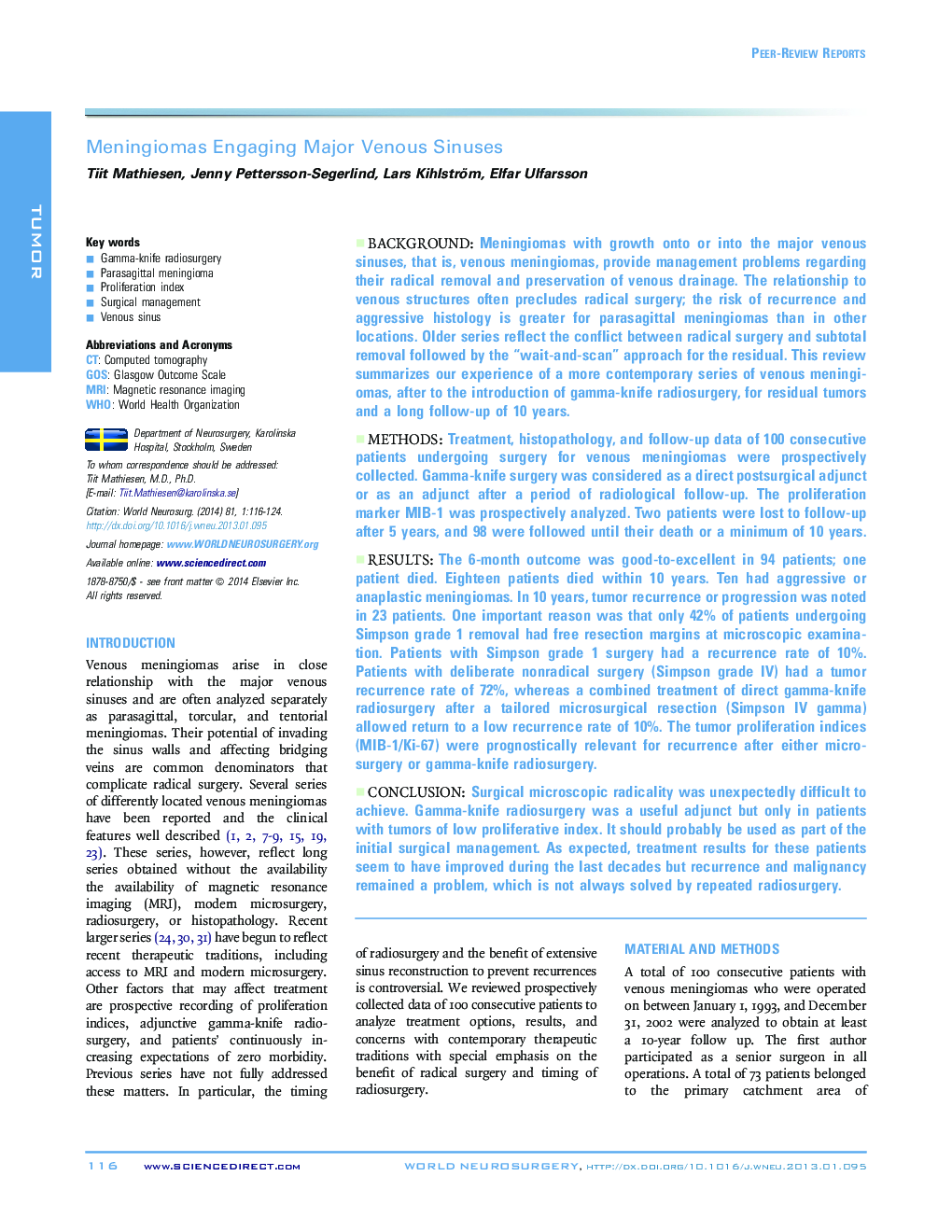| کد مقاله | کد نشریه | سال انتشار | مقاله انگلیسی | نسخه تمام متن |
|---|---|---|---|---|
| 3095648 | 1190915 | 2014 | 9 صفحه PDF | دانلود رایگان |
BackgroundMeningiomas with growth onto or into the major venous sinuses, that is, venous meningiomas, provide management problems regarding their radical removal and preservation of venous drainage. The relationship to venous structures often precludes radical surgery; the risk of recurrence and aggressive histology is greater for parasagittal meningiomas than in other locations. Older series reflect the conflict between radical surgery and subtotal removal followed by the “wait-and-scan” approach for the residual. This review summarizes our experience of a more contemporary series of venous meningiomas, after to the introduction of gamma-knife radiosurgery, for residual tumors and a long follow-up of 10 years.MethodsTreatment, histopathology, and follow-up data of 100 consecutive patients undergoing surgery for venous meningiomas were prospectively collected. Gamma-knife surgery was considered as a direct postsurgical adjunct or as an adjunct after a period of radiological follow-up. The proliferation marker MIB-1 was prospectively analyzed. Two patients were lost to follow-up after 5 years, and 98 were followed until their death or a minimum of 10 years.ResultsThe 6-month outcome was good-to-excellent in 94 patients; one patient died. Eighteen patients died within 10 years. Ten had aggressive or anaplastic meningiomas. In 10 years, tumor recurrence or progression was noted in 23 patients. One important reason was that only 42% of patients undergoing Simpson grade 1 removal had free resection margins at microscopic examination. Patients with Simpson grade 1 surgery had a recurrence rate of 10%. Patients with deliberate nonradical surgery (Simpson grade IV) had a tumor recurrence rate of 72%, whereas a combined treatment of direct gamma-knife radiosurgery after a tailored microsurgical resection (Simpson IV gamma) allowed return to a low recurrence rate of 10%. The tumor proliferation indices (MIB-1/Ki-67) were prognostically relevant for recurrence after either microsurgery or gamma-knife radiosurgery.ConclusionSurgical microscopic radicality was unexpectedly difficult to achieve. Gamma-knife radiosurgery was a useful adjunct but only in patients with tumors of low proliferative index. It should probably be used as part of the initial surgical management. As expected, treatment results for these patients seem to have improved during the last decades but recurrence and malignancy remained a problem, which is not always solved by repeated radiosurgery.
Journal: World Neurosurgery - Volume 81, Issue 1, January 2014, Pages 116–124
